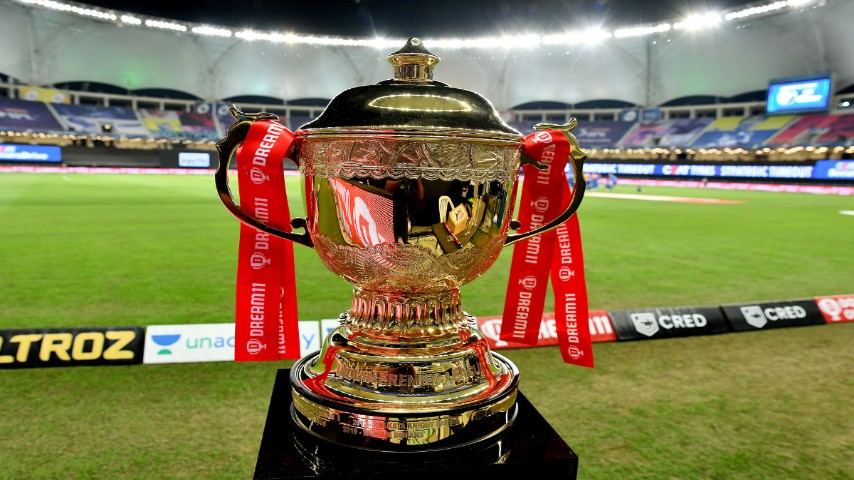- Wed, March 16, 2022

Loading

Loading

IPL Governing Council Announces TATA IPL Player Regulations for 2025-27 Cycle
The Indian Premier League (IPL) Governing Council met today in Bengaluru to finalize and announce key changes to the player regulations for the 2025-2027 cycle of the TATA IPL. Following extensive discussions with the owners of the 10 IPL franchises earlier in July at the BCCI headquarters, the newly introduced regulations are set to redefine team compositions, salary caps, and player participation.
Here’s a detailed breakdown of the critical decisions that emerged from today’s meeting:
Retention and Right to Match (RTM) Restrictions
The IPL franchises can now retain up to six players from their existing squads. This includes both direct retentions and the use of the Right to Match (RTM) option, giving teams flexibility to maintain their core strength.
The IPL franchises will also have the discretion to decide the balance between retentions and RTMs, but there are conditions. Among the six players retained, a maximum of five can be capped (Indian or overseas), while only up to two can be uncapped players. This rule encourages a balanced approach between securing established players and nurturing emerging talent.
Auction Purse and Salary Cap
One of the major announcements is the adjustment to the auction purse, set at INR 120 crore for the 2025 season. This change comes with a restructured salary cap that integrates the auction purse with incremental performance pay and, for the first time in IPL history, match fees. The revised salary cap for IPL 2025 is INR 146 crore, with further increments to INR 151 crore for 2026 and INR 157 crore for 2027.
In 2024, the salary cap (combining auction purse and performance pay) was capped at INR 110 crore, making this a significant boost that offers franchises greater financial freedom to attract top players while also rewarding them for individual performance.
Introduction of Match Fees
Perhaps the most groundbreaking change is the introduction of match fees for players. Every player included in the playing XI, including the designated Impact Player, will earn an additional INR 7.5 lakh per match. This fee will be separate from their contracted amount, adding another layer of incentive for players to contribute on the field.
This is a first in IPL's illustrious history, ensuring that players are rewarded not just for signing contracts but for their actual participation and performance in every match.
Overseas Player Registration & Bans
Another noteworthy regulation is the mandatory registration for overseas players in the Big Auction. Failure to register makes a player ineligible for the next year’s auction, creating a sense of urgency for international stars to commit their availability.
In addition, any player, Indian or overseas, who registers for the auction and then withdraws after being picked by a team, will face a two-season ban from both the tournament and future auctions. This strict measure is likely aimed at ensuring player availability and preventing late pullouts that can disrupt team plans.
Capped Players Becoming Uncapped
A unique new regulation affects capped Indian players, where they can lose their capped status. Any player who has not played in the starting XI for India (across formats) in the last five calendar years or does not hold a BCCI central contract will be considered uncapped. This change will only apply to Indian players and might influence how teams approach their uncapped talent pool, as experienced players could suddenly be available in this category.
(Under the new IPL regulations for 2025-27, a capped Indian player can become uncapped if they have not played in India's starting XI (Test, ODI, or T20I) in the last five calendar years or do not hold a BCCI central contract.
Since MS Dhoni last played for India in 2019 and no longer holds a central contract with the BCCI, he would technically meet the conditions to be considered uncapped under this new rule.
However, this rule is mainly aimed at players who haven't featured at the international level recently and who don't have the same stature as someone like Dhoni. Given Dhoni's immense legacy and the fact that he continues to lead the Chennai Super Kings, it's unlikely that the franchises or IPL management would treat him as an uncapped player, even if technically possible.
Also, it's worth noting that Dhoni’s stature and the value he brings to any franchise likely outweigh the benefits of categorizing him as uncapped for tactical reasons.)
Impact Player Rule Continues
The Impact Player regulation, introduced in recent IPL seasons, has added tactical depth to the game, and it will continue for the 2025-2027 cycle. Teams can continue to use this rule, which allows them to substitute one player during a match, keeping the focus on adaptability and strategy.
The TATA IPL Player Regulations for 2025-2027 bring several significant shifts that will shape the future of the tournament. By balancing player retention, financial caps, and match participation, these changes reflect the IPL’s evolving nature as both a global cricketing spectacle and a lucrative business venture.
With the introduction of match fees, more flexible retention policies, and stricter rules on player availability, the IPL Governing Council has laid the groundwork for an exciting new chapter in the tournament’s history. Fans, franchises, and players alike are sure to eagerly anticipate the impact these regulations will have on the competition.
Comments:
Leave a Reply